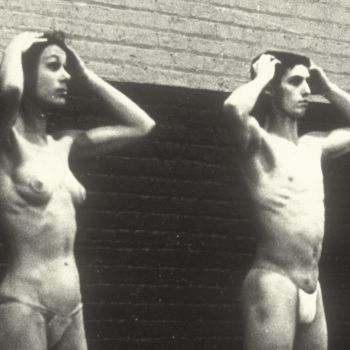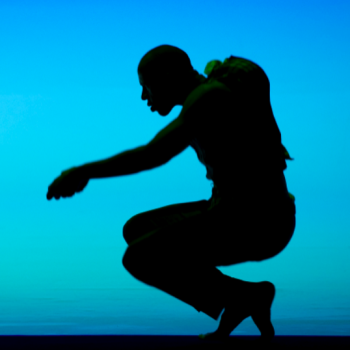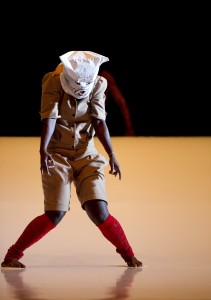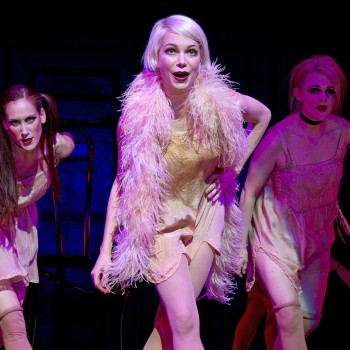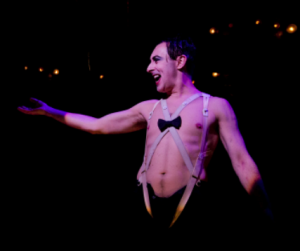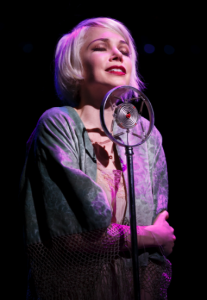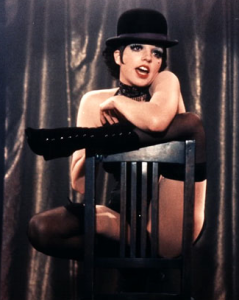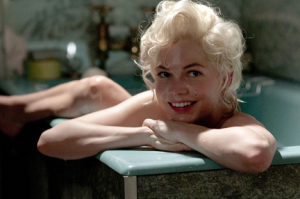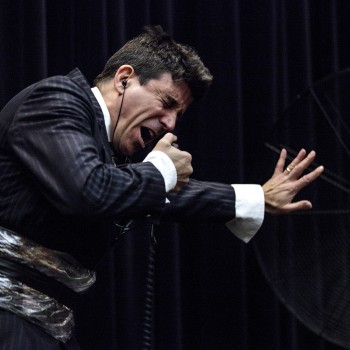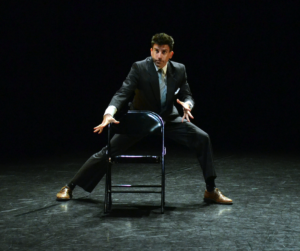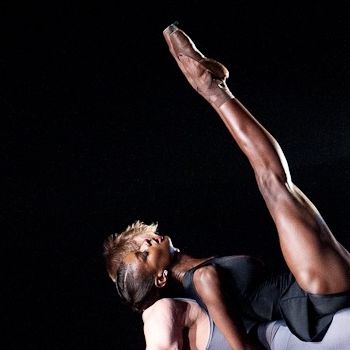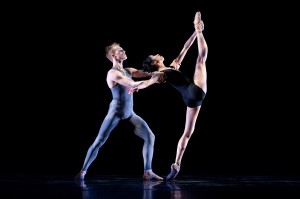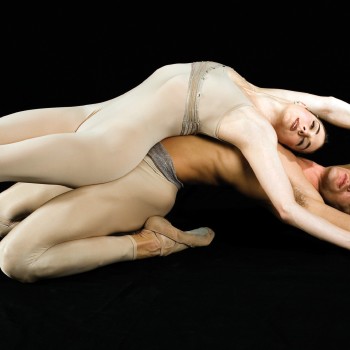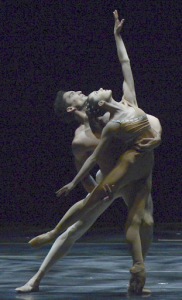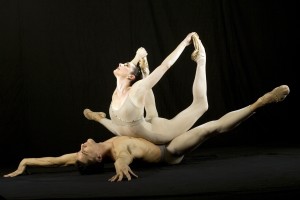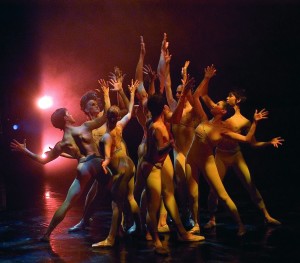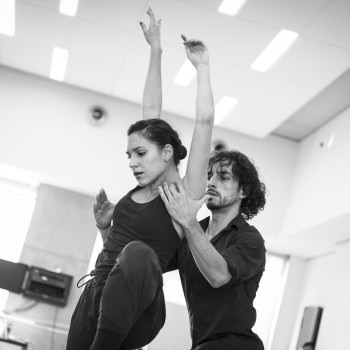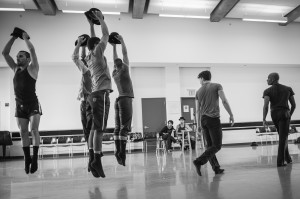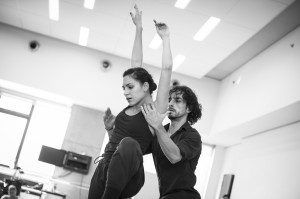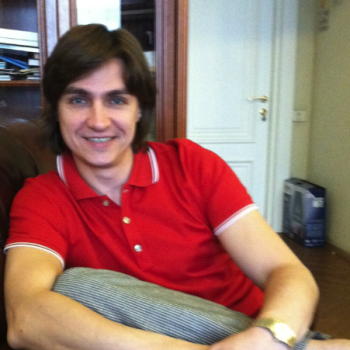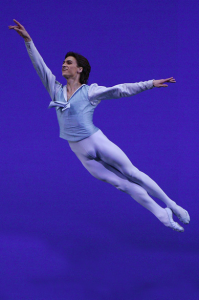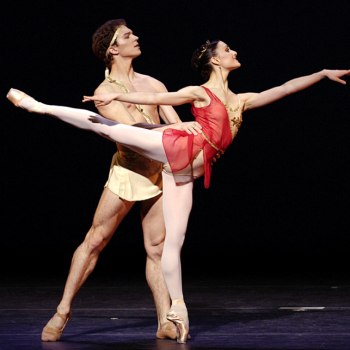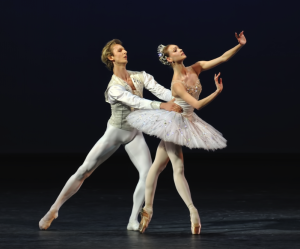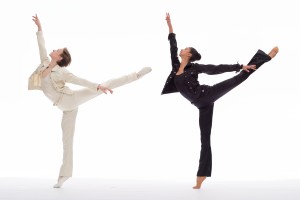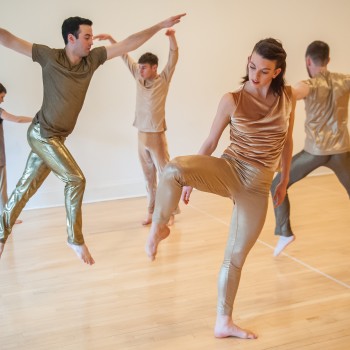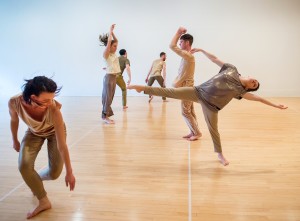I arrived at the Danspace Project benefit honoring Steve Paxton too late to hear Yvonne Rainer’s remarks. But now I’m glad because it gave me a reason to ask Yvonne to send me her written statement. And I love it so much that I am posting it here. They knew each other first from Robert Dunn’s composition class more than 50 years ago and were both co-founders of Judson Dance Theater. I think that’s all you need to know. So ladies and gentlemen, herrrrrre’s Yvonne:
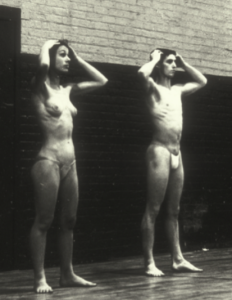
Rainer & Paxton in Word Words, 1963, photo by Al Giese
“First off, I would like unequivocally and with utmost affection to assert that Steve Paxton is a Grand Old Man of post-modern dance. With that said and without offering definitive proof, let me proceed by giving an example of how Steve was always a step ahead of most of us and me in particular when we were both taking Robert Dunn’s composition class in 1960. In response to Dunn’s assignment to make a one-minute dance, Steve sat on a bench and ate a sandwich. In hindsight, I see this provocative act as a launch pad for an ongoing dialogue between Steve’s curious conceptual intelligence and his remarkable kinetic gifts, which sometimes, as in the latter case, he was wont to evade or outwit. I must say his exertions in this regard could at times baffle me.
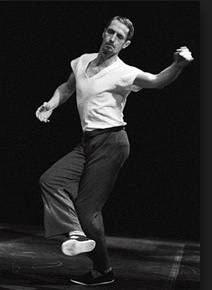
Paxton in undated photo
“For instance, around 1964 he taught a half-dozen of us — if memory serves, the group included me, Trisha Brown, Lucinda Childs, Deborah Hay, Tony Holder, and Judith Dunn — he taught us a rigorous sequence of Cunningham-like phrases, some of which involved difficult off-kilter balances on one leg. Having struggled mightily to master the balletic Cunningham technique, I was especially proud of being able to keep up with the more skilled dancers, some of whom, like Steve, were already members of the Cunningham Company. The performance of this work, called Afternoon, was to take place in a forest in New Jersey. When we got out there, much to my chagrin, Steve expected us to execute the moves on the forest floor, recently softened by rain. It was only much later that I could appreciate the brilliance of his strategy. His somewhat academic movements had been transformed into something entirely new. By being forced to adapt to what seemed like exasperating conditions, we discovered compensatory tactics like clinging to tree branches for balance and outmaneuvering the uneven terrain with last-minute falls and recoveries. I had to admit that he had wittily anticipated the situation from the outset without telling us. Since then Steve has been my favorite wily choreographer.
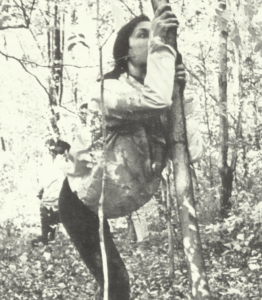
Yvonne Rainer in Steve Paxton’s Afternoon, 1963, photo by Peter Moore
“In innumerable interviews and Q & A’s over the years I have taken giddy pleasure in asserting that Steve invented walking and I invented running. As always, however, Steve took his pedestrian moves to the furthermost limits of the limb, unadorned by music or other audience-ingratiating elements. Satisfyin Lover of 1967 was an eye opener. When about to see this dance more than a decade later in a Stockholm festival, I was sure that as a historical relic its relevance had passed. For the most part the 42 performers, in various combinations and diverse in terms of race, age, and training, did not face the audience, but, rather, walked from stage right to stage left while fulfilling simple instructions as to pace and pauses before leaving the stage. So it seemed until half way through, an adolescent girl paused stage left, slowly turned to confront the audience, and paused again before making her exit. Her visible youth and uncertainty in that slow turn brought tears to my eyes.
“I won’t go into all the beautifully perverse and clarifying dances that Steve has created, presented, and collaborated and performed in over the years, like his performance of Flat from 1964, which I’ve heard drove members of a 2002 Parisian audience out of the theater as Steve took his own sweet time transforming himself into a clothes rack; and Ash, his ode to his father’s death, at the culmination of which, to a voiceover description of the problem of scattering his father’s ashes from an airplane, he sat in a chair with his back to the audience and with a few compelling gestures invoked loss and grief. Then there’s his work with disabled performers before anyone else, and Proxy of 1961, which began with his promenading of Jennifer Tipton en passé on ball bearings in a washtub; and Steve’s glorious improvisations to Glenn Gould. Always we are riveted by his imposing presence and a solemnity that can morph unexpectedly into a wry comedic effect, and by the clarity of his thought so apparent in gesture, use of objects, movement, and stillness.
“And let’s not forget Contact Improvisation, the form invented by Steve in 1972 and to this day practiced all over the world, with its immeasurable influence on innumerable dancers and choreographers in both their technical and aesthetic pursuits. To the best of my knowledge Contact has never been patented, which I sometimes think was a grave oversight on Steve’s part. (Not to spoil your dinner, Steve, I’ll take that up with you later.)
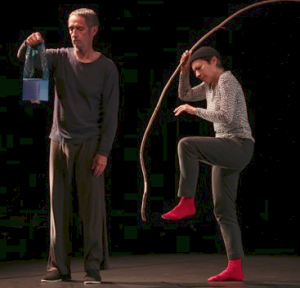
Steve Paxton and Lisa Nelson in Night Stand, 2013, photo by Paula Court
“I must also mention the stunning Night Stand, a collaboration with Lisa Nelson in which Lisa moves and Steve hardly at all. I saw this dance for the first time at Dia last fall. It met my most ardent expectations of the evening, made all the more satisfying by the finesse of the Dia production. On a final note, I take this opportunity to congratulate both Dia and Danspace for their 40-year commitment to artists and choreographers. I know I speak for Steve as well as myself when I say that we have both been beneficiaries of the generosity and risk-taking of these vital organizations.
“Thank you all.”
Featured Uncategorized 1
